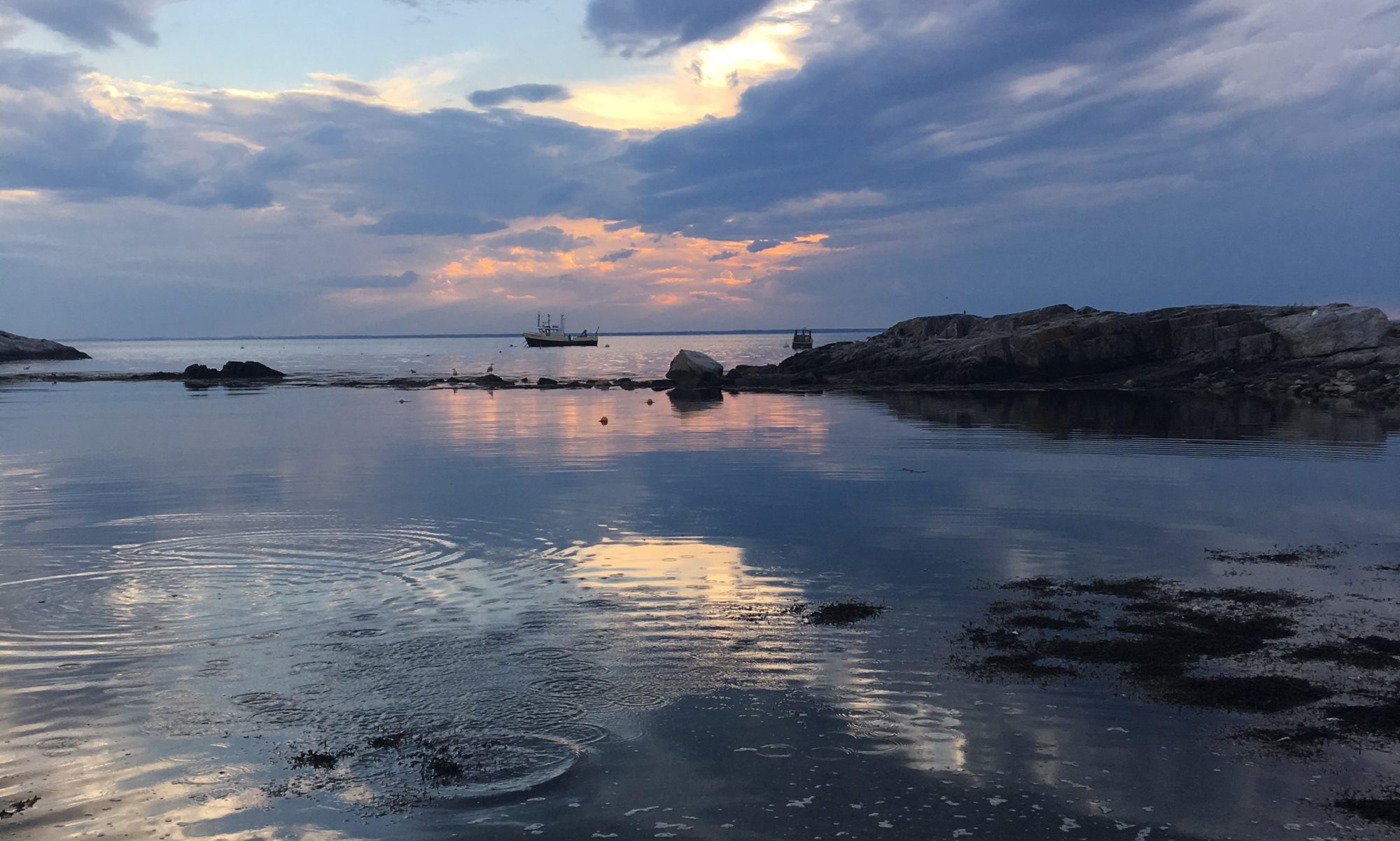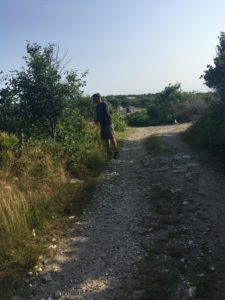I believe that everyone should visit the ocean with a marine biology professor at least once in their lifetime. Somehow, the ocean renders flora, fauna, and rock indistinguishable from one another. Sometimes, the animals look like plants or the rocks look like animals or the animals are actually plants. But a Marine Biology professor knows the difference. Accompanying one to the sea is like bringing a dictionary, and several ocean guidebooks. But the marine biology professor is slightly more talkative and has a tendency to point out the cool things you didn’t even notice in the first place.
During our stay in Brunswick, Maine, Katie and I embarked on several animal collection trips. With us on these trips were Professor McAlister, his PhD sibling John, with whom we were working for a week, and John’s students, Matthew and Amanda. In our quest for moon snails, sea stars, and sand dollars, we encountered beaches both sandy and rocky, mud flats, tide pools, and giant docks. The trips required us to visit the ocean shore at low tide, which, unfortunately for our sleep schedules, coincided with the sunrise. We left Brunswick at 6am or earlier the three days we were collecting. Thankfully, Frosty’s Donuts in town opened at 4am which meant we could collect our sea creatures while caffeinated!
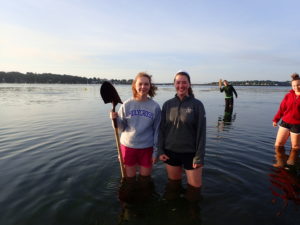
Katie and I (with Matthew and Amanda) in the water on the Moon Snail collection day
Our collecting trips led us to find many interesting creatures. These included brittle stars, moon snails, sand dollars, and urchins. Professor McAlister pointed out small lobsters and tunicates under rocks in the tide pools. While we were walking around, He and John demonstrated the proper way to hold a crab without getting pinched (on the sides of the shell, behind the claws!) while naming native algae species.
 Everyone looking for Moon Snails on the beach and in the water
Everyone looking for Moon Snails on the beach and in the water
Finding the moons snails was very difficult. They are about the size of a quarter and have a white foot, which doesn’t provide much contrast with the sand. They also look extremely similar to the other common snails that live in the area. Hermit crabs can inhabit the shells of deceased moon snails. This meant that the majority of the shells we saw were not the shells we wanted. However, after a couple hours of searching we found roughly 40 snails.
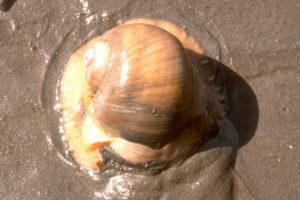 A Moon Snail with its white foot showing on the sand
A Moon Snail with its white foot showing on the sand
Matthew and Amanda used the moon snails for one of their experiments at Bowdoin’s Costal Marine Studies Center. When we visited them at the lab they told us about the moon snails. We learned that one of the main predators of the moon snail is the sea star, which were kept several tanks away. When we put the sea stars by the snails, they rearranged their slimy coat so that it moved from inside their shell to outside their shell and fully covered themselves. This self-protection measure is very efficient because it prevents the tube feet on the underside of the sea stars from attaching to its shell. If we placed the snails in a tank with the sea stars they could don this slimy coat within a minute.
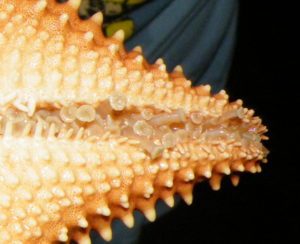 The tube feet of a sea star, up close!
The tube feet of a sea star, up close!
Our Maine trip held several more adventures which Katie and I are excited to share with you! Stay tuned for our next post which will take you with us while we hunt for Sand Dollars!
Over and out,
Sydney and Katie
